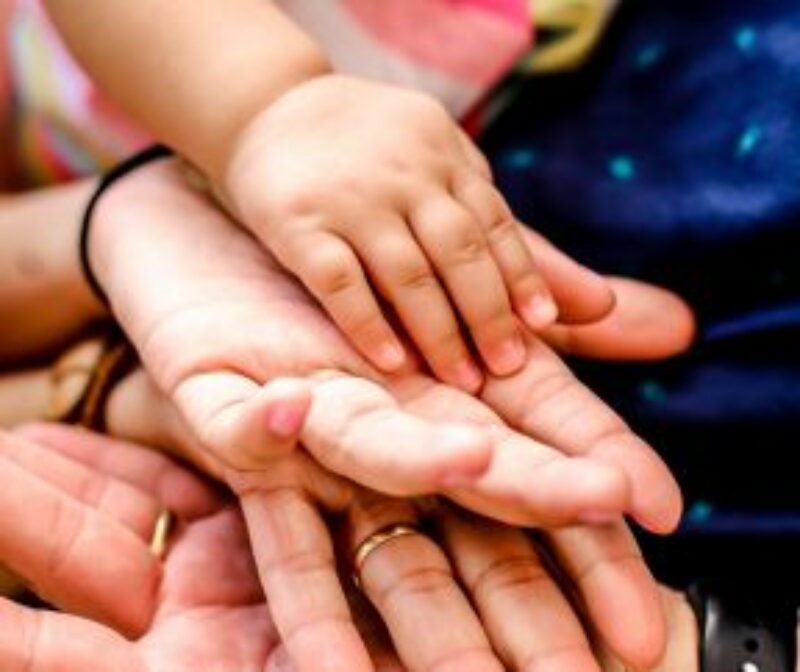To be in a relationship with others, we have to acknowledge that we are imperfect beings who are going to mess up. While it may sound trite to say, it can’t be said enough. There are a lot of misconceptions about what forgiveness is and when it should be offered. Before we explore helpful strategies for practicing forgiveness in close relationships, let’s debunk some of the myths many of us may believe about what forgiveness looks like. Because, as we all know, forgiveness is much more complex than simply saying sorry.
Forgiveness is NOT…
- For the other person
- Letting go of accountability
- Being a pushover
- Pretending that nothing happened
- Easy or simple
- Forgetting
Forgiveness is…
- For the sake of the person doing the forgiving
- Sharing honestly with the other person how you feel
- Practicing letting go of the energy it takes to be resentful or vengeful towards another person
- Learning to feel anger and then practicing letting it go
- Work on making peace with the life you have
From Hold Me Tight by Dr. Sue Johnson (p. 137)
Separating Grace From Forgiveness
Forgiveness is no small term to unpack. It’s no wonder we have such a hard time putting this word into practice when it is hard to come to a consensus about what forgiveness actually means. According to Richard Holloway in his book, On Forgiveness, “…when true forgiveness happens it is one of the most astonishing and liberating of the human experiences.” From the perspective of being part of a Christian community, forgiveness brings up the question of what it means to extend grace towards one another. Are grace and forgiveness one and the same? Grace carries a connotation of relationship; we have the choice to be gracious towards one another because, from the Christian perspective, we have the conviction that grace that was shown towards us. But the grace God shows us is somewhat incomprehensible since, as humans, we can’t quite mirror God’s unconditional love. Psychologically, it is hard to conceptualize how love could be unconditional when we are socialized in spaces that often model to us from an early age that love is actually highly conditional. In every relationship we’re in, there is a power dynamic where each person holds a certain amount of power or influence over the other. Power used for good empowers the other to live into their cohesive self and supports their identity as the beloved.
Why do we shy away from forgiveness?
To be in intimate relationships is to open ourselves up to the possibility that we could be hurt or could hurt someone we love. Instead of turning towards one another when we make mistakes, we often run away feeling shame, carrying guilt, or fear of disappointment. The reality is that we are capable of damaging others “so deeply that we rob them of the future by stopping movement in their lives at the moment of injury, which continues to send out shock-waves of pain that swamp their whole existence” (p. 13). The shame associated with that kind of harm is hard to forgive in one’s self, let alone forgive when it is inflicted upon us. This reality can keep us from even attempting forgiveness. Yet, we were created as relational beings. So no matter how much we have to fight our desire to shy away from facing the other, we need one another, and need reconciliation.
Forgiveness: Embracing the Messiness
Forgiveness is not self-forgetting, denial, or diminishment of a wrong done. Forgiveness is to choose to be in relationship with others even when it gets messy. We all carry wounds from our earliest relationships, but we have the choice as adults to continue old patterns or rebuild, start over, and make new pathways in our brains into which forgiveness and wholeness are possible. Forgiveness “can deliver the future to us” (p. 13).
To be in a relationship with others, we have to acknowledge that we are imperfect beings who are going to mess up. While it may sound trite to say, it can’t be said enough. There are a lot of misconceptions about what forgiveness is and when it should be offered. Before we explore helpful strategies for practicing forgiveness in close relationships, let’s debunk some of the myths many of us may believe about what forgiveness looks like. Because, as we all know, forgiveness is much more complex than simply saying sorry.
Practice
Often when someone hurts us, the action has picked at an old wound. Many of our earliest wounds relate to our attachment figures. The first step to healing an attachment injury is to recognize and articulate it. We want to preface that sometimes thinking about old wounds can be really overwhelming. If you think you need the help of a professional, and don’t have a therapist, click the link here to find the help you need.
If you are ready to practice forgiveness, you might want a pen and paper to write down your thoughts.
- Think of an incident in the past when you were hurt by someone important to you. The past hurt or trauma could be something small or something significant. Consider what it was. Was it a conversation, an action, a comment?
- What did this instance lead you to conclude about the other person? What did you conclude about the intent of the other person?
- Next, ask what you were longing for when you were wounded. What did you do to protect yourself in the moment?
- Now ask, “Did I feel abandoned or left behind? Did I feel that someone was putting me in danger or betraying my trust?”
- Were you able to identify a sensitivity from these questions that plagues your relationships or communication with loved ones? Did this activity help you access your feelings?
Letting go
“Pain in life is inevitable. Suffering, on the other hand, is optional,” writes compassion and mindfulness expert Dr. Shauna Shapiro (2020).
Forgiving others is a grieving process. We are lamenting the loss of trust, hope, or safety that a relationship with another person once fostered. Saying sorry is a start, but forgiveness is more than just lip service. First, forgiveness is embodied within us. It is more than an emotion; it is a decision and a behavior to move forward. To do this, we must be mindful of what’s happening within us and become aware of how our emotions are landing in our felt experiences inside our bodies. Many of the same principles that apply to grief also apply to forgiveness. As you’re contemplating what it means to forgive, mindfulness practices can help you attune to your body.
Part of being mindful requires that we learn to see our thoughts through a non-judgemental lens. Practicing non-judgement allows us to observe our thoughts and, over time, opens us to compassion and loving kindness toward others and ourselves. With practice, we can observe our anger or fear or hurt and decide how to let go and move forward toward forgiving ourselves or someone else. Remember that forgiveness is a process. It requires mindfulness, attunement to your body, and grounding in the present moment. These practices are meant to be a work in progress. Forgiveness is a journey you cannot fully plan for, but everything we’ve talked about can be put into practice along the way.
For more ways to begin to put forgiveness into practice, consider reading:
Free of Charge: Giving and Forgiving in a Culture Stripped of Grace
Good morning. I love you.
On Forgiveness
Other resources:
Practice of Goodness of Being a Body
https://thethrivecenter.org/grief-and-mindfulness-body/
Sources:
Hold me Tight by Dr. Sue Johnson
Balswick, J. O., King, P. E., & Reimer, K. S. (2016). The Reciprocating Self: Human Development in Theological Perspective. InterVarsity Press
Continue Exploring

Blog
Attachment Styles: Why Does Love Sometimes Feel so Difficult? (Part 1)
What do you need to understand about your attachment style?

Blog
Attachment Styles (Part 2): Will Love Always Feel This Hard?
Understand attachment through this case study.
